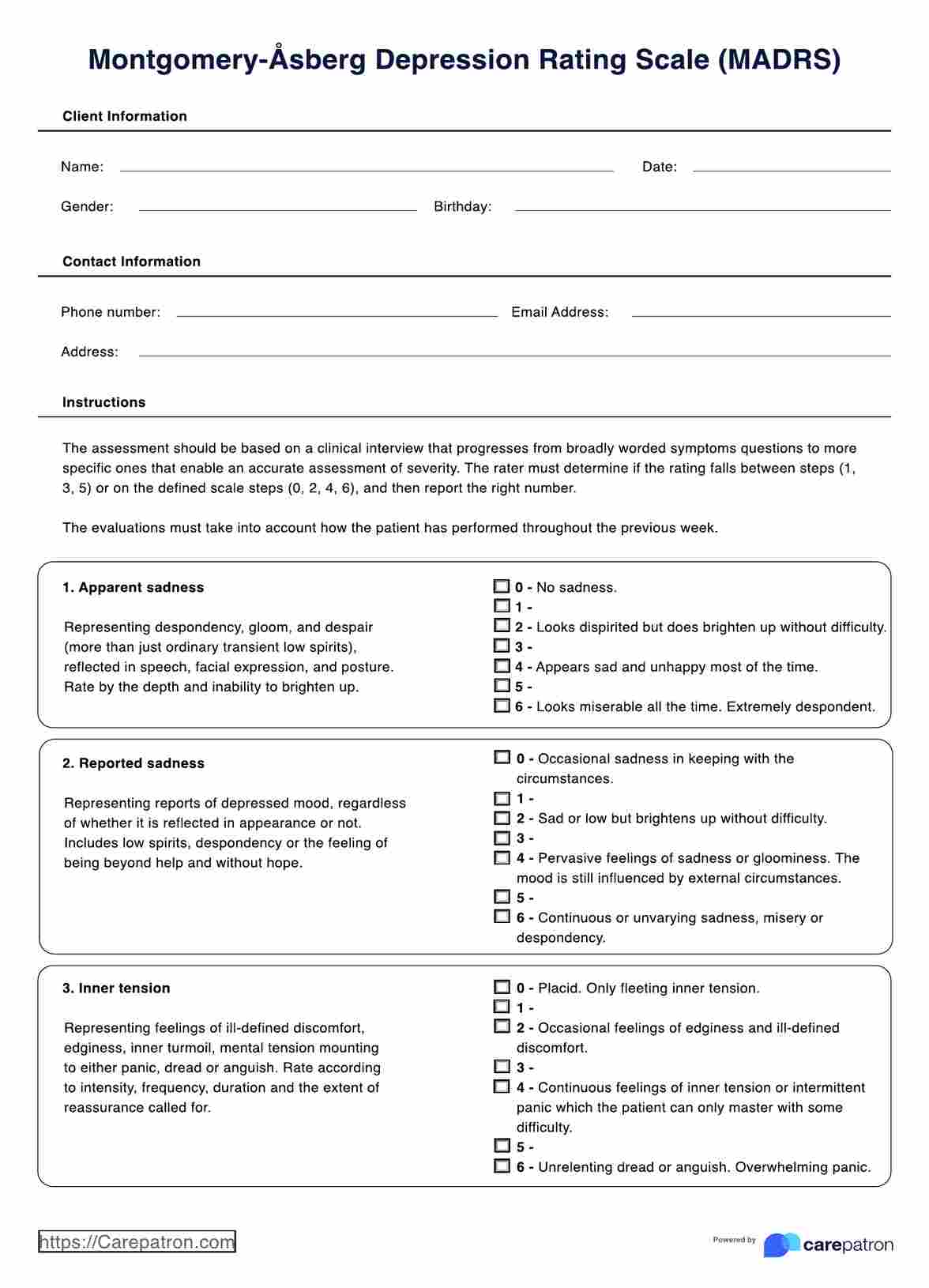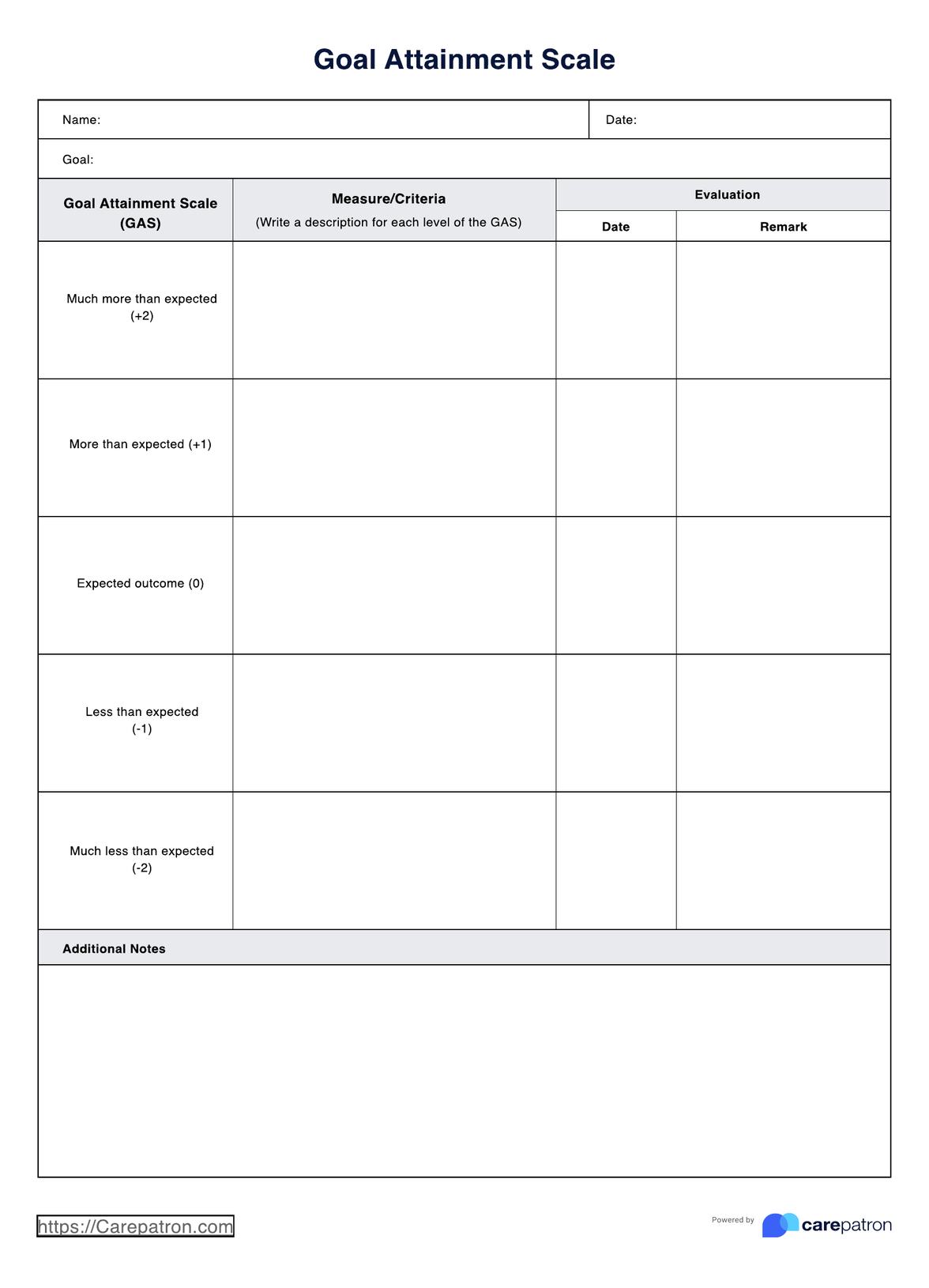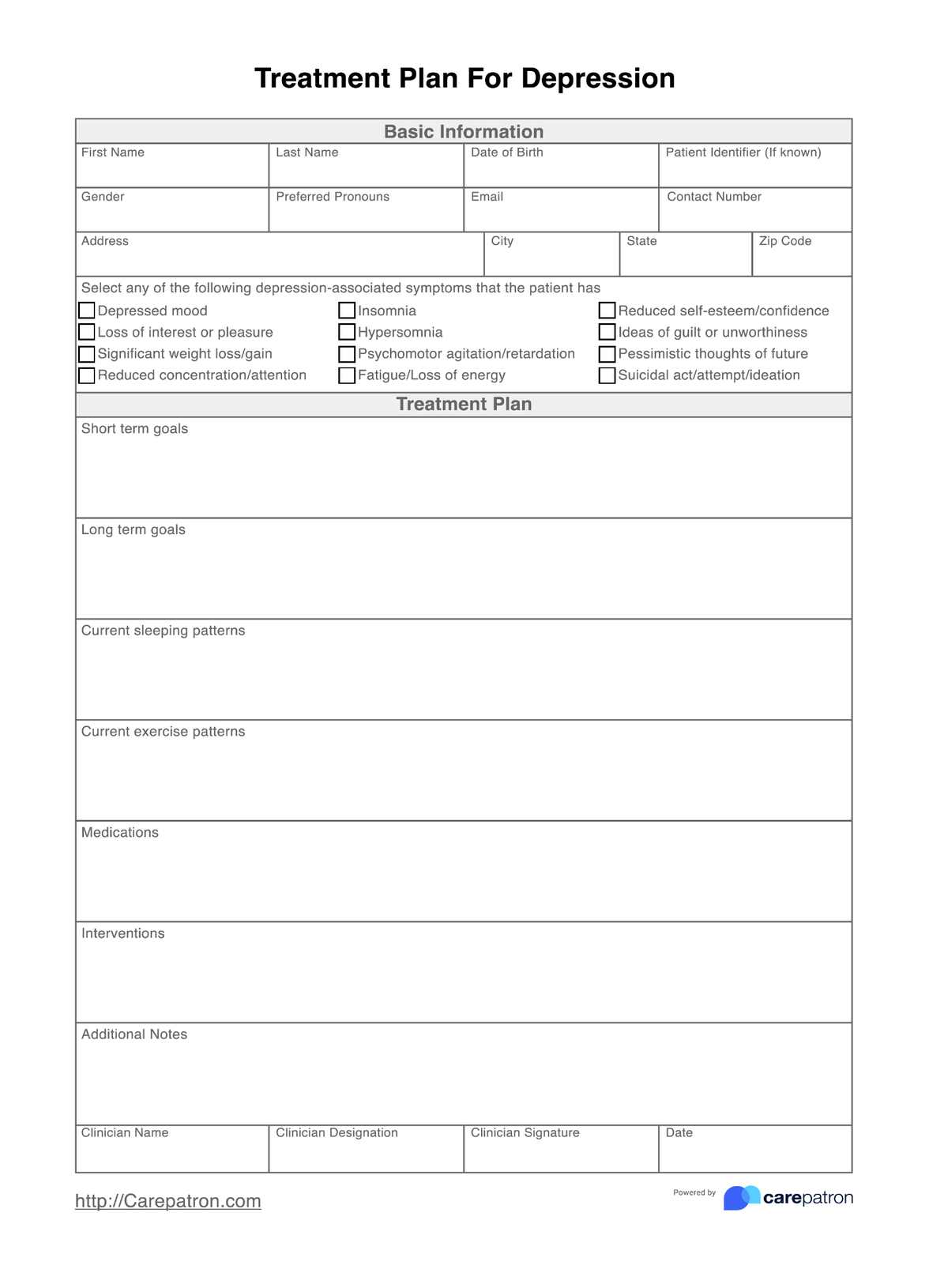Geriatric Anxiety Scale
Issue the Geriatric Anxiety Scale to your geriatric patient to gauge their anxiety symptoms. Learn more about it through this guide.


What is the Geriatric Anxiety Scale?
The Geriatric Anxiety Scale (GAS) is a specialized assessment tool designed to evaluate anxiety symptoms in the elderly population. As health experts in the field, understanding and utilizing the GAS is essential for effectively identifying and addressing anxiety disorders among geriatric individuals.
Anxiety disorders are prevalent among older adults, often coexisting with other mental health conditions such as depression. The GAS is particularly valuable in distinguishing anxiety symptoms from other psychological issues, providing a more targeted approach to diagnosis and intervention.
The scale encompasses a range of anxiety-related indicators, including somatic symptoms, cognitive impairment, and overall emotional distress. It addresses both generalized anxiety disorder (GAD) and specific manifestations of anxiety, allowing healthcare professionals to assess the nature and severity of geriatric anxiety comprehensively.
The Geriatric Anxiety Scale is distinct from other assessments, such as the Beck Anxiety Inventory, as it is specifically tailored for the elderly population. It recognizes the unique challenges and manifestations of anxiety in older adults, considering factors such as cognitive decline and somatic symptoms that may be more prevalent in this demographic.
One of the notable features of the GAS is its incorporation of somatic symptoms, recognizing that older adults may express anxiety through physical complaints rather than explicitly verbalizing emotional distress. This nuanced approach ensures a more accurate representation of anxiety in geriatric patients, facilitating a more precise diagnosis.
The Geriatric Anxiety Inventory (GAI) is a subset of the GAS, focusing specifically on anxiety symptoms. Health experts can utilize this inventory to streamline the assessment process and pinpoint areas of concern related to geriatric anxiety. The GAI aids in identifying the presence and severity of anxiety symptoms, offering a valuable tool for monitoring changes over time and assessing the effectiveness of interventions.
In clinical practice, the GAS proves invaluable for health professionals working with older adults, allowing for a targeted and comprehensive evaluation of anxiety and depression symptoms. The scale's emphasis on cognitive and somatic aspects ensures a holistic understanding of geriatric anxiety, leading to more effective and tailored treatment plans for this population. As the aging population continues to grow, the Geriatric Anxiety Scale remains a critical instrument for promoting mental well-being among older adults.
If you're concerned that your patient may be displaying depression symptoms, feel free to access this resource:
Geriatric Anxiety Scale Template
Geriatric Anxiety Scale Example
How to use the Geriatric Anxiety Scale:
The Geriatric Anxiety Scale (GAS) is a comprehensive tool designed to assess anxiety symptoms in elderly patients. The following steps guide healthcare professionals in effectively using and interpreting the scale.
1. Introduction and identification
Introduce the form to the elderly patient, ensuring clarity on assessing anxiety symptoms. Collect essential demographic information, including the patient's full name and the form submission date.
2. Instructions for completion
Clearly explain the instructions on the form, emphasizing that respondents should indicate the frequency of experiencing each anxiety symptom over the past week. Ensure that respondents understand the scale values (0 = Not at all, 1 = Sometimes, 2 = Most of the time, 3 = All of the time) for accurate self-reporting.
3. Completing the scale
Direct the patient to respond to each item based on their experiences. Encourage honest and thoughtful responses to capture an accurate representation of anxiety symptoms.
4. Scoring the scale
Calculate the total score by summing the values of Items 1 to 25.
Compute subscale scores for a more nuanced understanding of anxiety symptoms:
- Somatic subscale: Items 1-3, 8, 9, 17, 21-23
- Cognitive subscale: Items 4-5, 12, 16, 18-19, 24-25
- Affective subscale: Items 6, 7, 10-11, 13-15, 20
5. Overall total score and interpretation
Calculate the overall total score by summing all items. Utilize the total and subscale scores to interpret the severity and nature of anxiety symptoms in the elderly patient. Higher scores indicate a greater presence of anxiety symptoms, necessitating further assessment and intervention.
6. Additional comments section
Provide space for healthcare professionals to add any additional comments or observations. This section allows for a more personalized and detailed assessment of the patient's mental health status.
7. Integration with other assessment tools
Consider integrating the GAS results with other relevant assessments, such as the Geriatric Depression Scale, State-Trait Anxiety Inventory, or the General Health Questionnaire, for a comprehensive evaluation.
The Geriatric Anxiety Scale, with its structured format and specific scoring system, aids health experts in systematically assessing and addressing anxiety symptoms in older adults, contributing to more targeted and effective mental health interventions.
When is it best to use the Geriatric Anxiety Scale?
The Geriatric Anxiety Scale (GAS) is a valuable resource in the field of geriatric psychiatry, specifically designed to assess anxiety symptoms in the elderly population. This tool is particularly appropriate in various clinical and research settings where a targeted evaluation of geriatric anxiety is essential.
1. Routine geriatric mental health assessments
The GAS is apt for routine mental health assessments in geriatric psychiatry. Given the heightened vulnerability of elderly individuals to anxiety disorders, incorporating this scale ensures a systematic evaluation of anxiety symptoms.
2. Differential diagnosis
When distinguishing between anxiety disorders and other psychological conditions, the GAS proves invaluable. Its focus on somatic symptoms and cognitive aspects aids in identifying anxiety, especially in cases where symptoms might overlap with other mental health issues.
3. Monitoring treatment progress
The GAS is useful for monitoring treatment progress in geriatric mental health interventions. Periodic administration of the scale allows clinicians to assess changes in anxiety symptoms over time, providing insights into the effectiveness of therapeutic interventions.
4. Randomized controlled trials (RCTs)
Researchers often utilize the GAS in RCTs to investigate the efficacy of interventions targeting geriatric anxiety. Its standardized format and psychometric properties make it a reliable self-report measure for assessing treatment outcomes in research studies.
5. Psychological symptom studies
When conducting studies on psychological symptoms in older adults, the GAS offers a specific focus on anxiety. Researchers can incorporate this scale to gather detailed information on the prevalence and severity of anxiety symptoms in their study population.
6. Internal consistency and psychometric properties
The GAS, known for its strong psychometric properties, ensures reliable and consistent results. This reliability is crucial when utilizing self-report measures, providing a solid foundation for accurate assessment.
7. Difficulty concentrating and negative emotions
The GAS is especially pertinent when assessing difficulty concentrating and negative emotions in elderly individuals. As these symptoms are common in late-life anxiety, the scale offers a targeted approach to understanding their prevalence and impact.
The Geriatric Anxiety Scale is best employed in routine geriatric mental health assessments, differential diagnosis scenarios, and when monitoring treatment progress. It is also a valuable tool in research settings, particularly in RCTs and studies on psychological symptoms in the elderly. The scale's sensitivity to somatic and cognitive symptoms, along with its robust psychometric properties, makes it a reliable resource for clinicians and researchers aiming to evaluate and address anxiety in older adults comprehensively.
What are the benefits of using the Geriatric Anxiety Scale?
The Geriatric Anxiety Scale (GAS) presents health experts with a comprehensive and valuable tool for assessing anxiety in older adults. Here are five key benefits associated with the utilization of the GAS:
Targeted assessment of late-life anxiety
The GAS is specifically designed to assess anxiety symptoms in the elderly, offering a targeted approach that considers the unique manifestations and challenges associated with late-life anxiety. This focus enhances the diagnostic precision in distinguishing anxiety from other mental health conditions, such as late-life depression.
Robust psychometric properties
The GAS demonstrates adequate psychometric properties, including high internal consistency and reliability. Its one-factor structure ensures a streamlined and reliable assessment process, contributing to the scale's credibility as a diagnostic tool for anxiety in older adults.
Convergent and Divergent validity
The GAS exhibits convergent and divergent validity, strengthening its utility in clinical settings. It effectively captures anxiety symptoms without confounding with measures of late-life depression or other affective symptoms, ensuring its accuracy as a standalone screening tool for anxiety in the elderly.
Diagnostic sensitivity and specificity
The GAS demonstrates diagnostic accuracy in detecting anxiety through receiver operating characteristic (ROC) analysis. Its ability to differentiate between individuals with and without anxiety symptoms makes it a reliable screening tool, aiding health professionals in making informed decisions regarding intervention and treatment planning.
Efficient screening for various anxiety presentations
The GAS's short form facilitates a quick and efficient screening, making it particularly advantageous in busy clinical settings. Health experts can swiftly assess a range of anxiety symptoms, from somatic complaints like an upset stomach to concerns about health or financial matters, allowing for comprehensive and time-effective evaluations.
Clinical relevance and health correlates
Beyond its diagnostic capabilities, the GAS has demonstrated clinical relevance by identifying anxiety symptoms that significantly impact daily life. Its ability to capture worries that interfere with functioning underscores its importance as a screening tool and guide for targeted interventions addressing specific areas of concern.
The Geriatric Anxiety Scale offers health experts several advantages, including targeted assessment, robust psychometric properties, validity, diagnostic accuracy, efficiency in screening, and clinical relevance. As a reliable and efficient tool, the GAS enhances the ability of health professionals to accurately identify and address anxiety symptoms in older adults, ultimately contributing to improved mental health outcomes in this population.
Commonly asked questions
The time to complete the Geriatric Anxiety Scale varies, but individuals typically require about 10 to 15 minutes to respond to the 30 items on the scale. It is designed to be a relatively quick self-report assessment.
No, the Geriatric Anxiety Scale is not a diagnostic tool. It serves as a screening measure, providing valuable information about the presence and severity of anxiety symptoms in older adults. A thorough diagnostic evaluation by a healthcare professional is necessary for a conclusive diagnosis.
While the Geriatric Anxiety Scale is primarily designed for use by healthcare professionals, individuals can still benefit from it. If you are not a healthcare professional, consider sharing the results with your healthcare provider for a more comprehensive assessment and interpretation tailored to your needs.


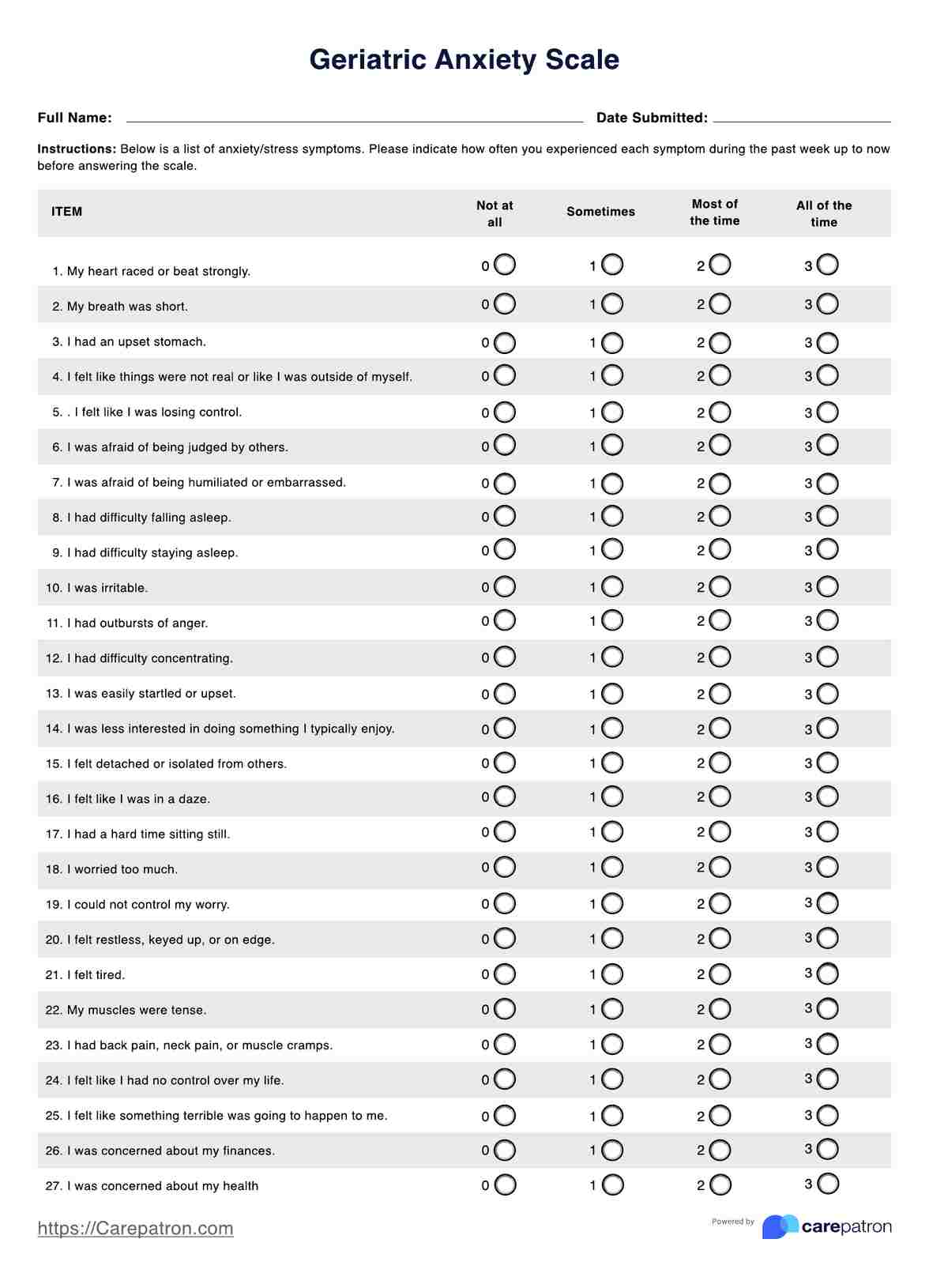
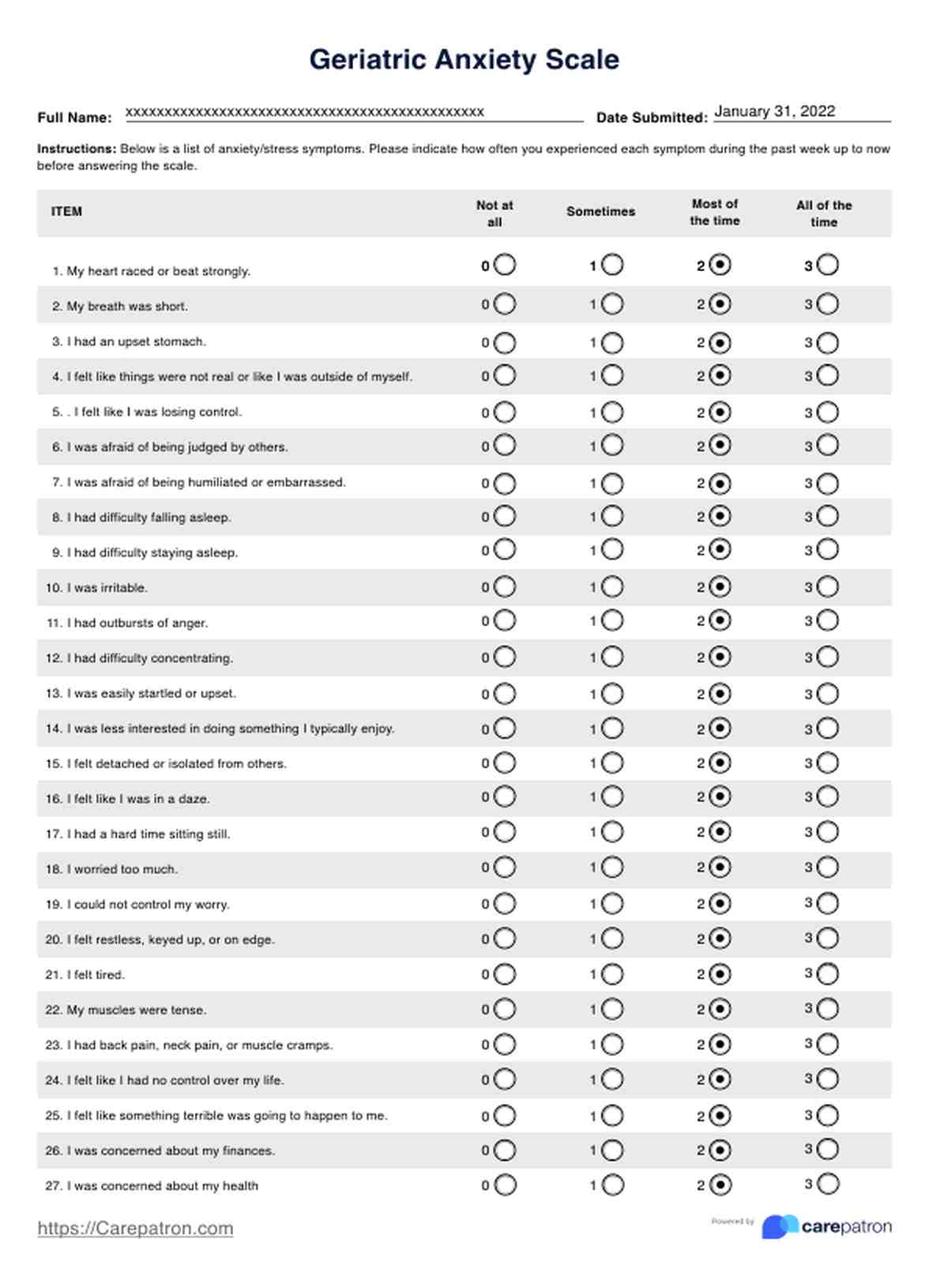













-template.jpg)























































































